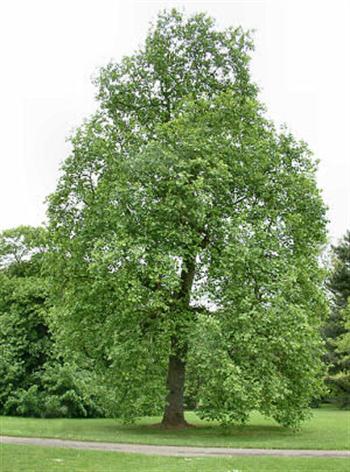Spruce
The darkness of this tree has roots, but its growth is excellent and reaches a height of 25 meters in less than 15 years. Fragrant, broad-leaved and single-base (pollen and pink seeds are formed on a plant and fertilized). The flowers are single, mostly fluffy, and with inflorescences (the arrangement of flowers on a stem or branch) is a cluster and the fruits are crusty.
The spruce is one of the fastest growing trees.
The spruce plants belong to the genus Populus and the family Bidian. Poplar timber is used in the field of matchmaking, chipboard, fiber, boxing and so on.
These fast-growing trees produce 15 to 10 times more woody forest trees and are varied in terms of species. Because spruce can be cultivated in different climatic zones and have shown self-adaptation, research activities on these trees are justifiable and important.
Spruce is a fast-growing tree that has faster growth and, consequently, a shorter exploitation period than other forest trees. These trees are considered as a source of wood supply outside the forest.
Poplar Botanical Garden

Poplar is a broad-leaved, light-fruited and creeping species. Flowers usually appear before the leaf early in life.
The spruce species are two-headed: male and female flowers. Each seed is isolated on each other. The seed is inside the capsule, each capsule usually has 2 to 4 valves, at the end of each seed is a white silk fleck. Which contributes to the release and release of it
The bark of young trees is mostly white or green, and as the age grows, deep and semi-deep grooves appear and darken in color.
The leaves are heart-shaped or egg-drawn with a toothed edge on the upper thigh. The buds are usually covered with a waxy substance and have a glossy appearance.
Populus genus, commonly spoken in Persian and spanish, is widely used in Tabriz. Raji Cuddly Whitewashed Or Sepidar.
Poplar species include:
1- Sepidar: P.alba is a pillar-shaped tree. Behind the leaves is brighter and silver is color. Its height is 25-18 meters and is very resistant. It was planted in old and modern gardens, either as a wind breaker on the margins, and sometimes planted in the main pathways.Gray poplar: P. canescens Its height reaches 30 meters. The size of the leaf is different from the sepider. The skin of the trunk is grayish-yellow.
3. Tabrizi: (Shalak, Poplar, Asiatic, Lombardy poplar) P. nigra var Italica is a beautiful, high-rise tree. Usually planted next to gardens. Its leaves are rosy and beautiful, with long leaves over its width. In the fall it turns yellow in the canary.4. Shivering spruce: (P.) The P.tremula leaves are similar to elm.5th P.eupratica is for the warm areas.
Poplar Deltoids (Oriental Poplar)
Scientific name: Populus deltoides Marsh.
Dark: Willow (Salicaceae)
English name: eastern poplar, cottonwood, northern cottonwood
Poplar Deltoids (Oriental Poplar) is a broad-leaved tree up to a height of 30 meters, with wide and right branches, and a broad-leaved crown. Branches are slightly cornered or partly cylindrical. In older shoots, often with clear angles, without cracking. Seedlings are brown, sticky. Leaves are delta-ovate or ovate-broad, tipped, with a heart-shaped, head-to-head, and 2 or 3 dentate-convex-shaped glands, arched, arched, full-headed, with dense eyelashes , With a length of 7-12 cm and a cross section at the same time, the scales are divided into threaded laps. The flags are 40-60, the spikes are 3- 4. Flowering inflorescences 15-20 cm in length.Considering that spruce constitutes more than 80% of the country’s non-war tree, the largest non-woods production category belongs to this species.
The amount of water needed for poplar cultivation is greater than fruit trees, but in areas such as the southern plains of the Caspian Sea, which are abundant in water, trees can not be sprouted extensively due to lack of land.
According to statistics, about two million cubic meters of poplar wood is produced annually in the country, equivalent to 40 percent of the total wood consumption.
This tree is suitable for the needs of the country because of its high adaptability and rapid growth.
Currently about 30,000 hectares of northern forests are dedicated to poppy cultivation, which is equivalent to 27 percent of spruce in the country.
Some species of poplar, such as Populus nigra L. var. Pyramidalis, have been cultivated in distant past in Iran, but current species, which are planted for the purpose of producing wood in the short term, are often imported.
Spruce
Scientific name: Populus alba
Dark Name: Salicaceae
History
Timbering has a very long history in order to produce wood. Since the original rural communities have always relied on wood, building up their shelter, they tended to produce their own timber, with increasing consumption, so the margins of the rivers and streams and around the houses and Farms have been planting trees for centuries. Over the centuries, humans discovered that some species were used for their needs, so they planted trees of this kind. One of these high-yielding species, which later Considered poplar trees.
Specifications
A tree with wide branches and open form. Skin is a white to grayish skin. The crown of this tree is dense and narrow and elliptical. Leaves are simple


 فارسی
فارسی Русский
Русский العربية
العربية